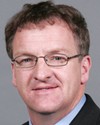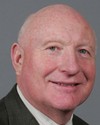Picking up on this discussion, the one point I would like to make, citing my colleagues at DFO, is that the population is not in fact increasing at the present time. It stabilized a number of years ago; the increase kind of leveled off. In fact, the Canadian government scientists now believe that the population is declining—as it must do, if their numbers are right, and if we continue to remove more than the sustainable yield from this population.
I would urge you to talk to the government scientists and ask them what the population is doing right now, because it's not increasing; it's decreasing. It will continue to decrease as long as the government maintains a total allowable catch above the sustainable yield and as long as the government allows sealers to exceed the total allowable catch.
You made the statement at the beginning that we could stay in this room for 100 years and never agree on anything. But you and I are reasonable people, and I think we could agree. Between 1950 and 1970, scientists said the harp seal population is declining, and you have to do something. It took 20 years, and what did they do? In 1971 they introduced quota management. I'm sure there was a committee hearing in 1960 that said we could sit in here for 100 years and would not do anything, but at the end of the day the science and reason prevailed, and things were changed.
I think we have a wonderful analogy with the current discussion of global warming. The first paper I published with global warming in the title was in 1990. Ever since, there have been all these people denying global warming. Suddenly, in the last year or so, we've come to realize that global warming is real and that we caused it—and, incidentally, it's causing problems for seals.
I think you and I sitting in a room—perhaps for a few months, not 100 years—could agree that in the face of scientific and environmental uncertainty, maybe it would be prudent to put into place a precautionary approach that might just benefit both the seals and the people who want to hunt them.




